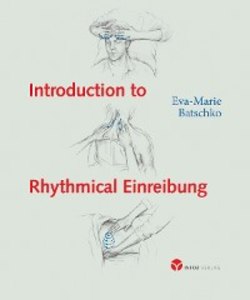Читать книгу Introduction to Rhythmical Einreibung - Eva-Marie Batschko - Страница 6
ОглавлениеAbout the teaching method
Our training seminars for Rhythmical Einreibung at the Carus Academy in Hamburg each start with an introductory evening lecture on the nature of the human being.
The participants then review this lecture using a learning method for adults developed by Coenraad van Houten (1) in collaboration with Bernard Lievegoed. Rudolf Steiner's research on the life processes forms the basis for this approach.
| Life processes | Learning processes | |
| 1) Breathing | Observing | Attention – exhalation and inhalation with all senses (What was said – what did we hear?) |
| 2) Warming | Connecting | Warming to the topic (What are the essential emotional experiences and thoughts?) |
| 3) Nutrition | Processing | Process of digesting the topic – Working on and analysing different thoughts |
| 4) Separation | Individualisation | Incorporating and making the content our own. Allowing new thoughts, feelings and intentions to rise up in ourselves (Distinguishing the essential from the nonessential – developing a question) |
| 5) Conservation | Practise | Cultivating the seeds of the new thoughts (Repetition) |
| 6) Growth | Growing skills | Transforming concrete exercises into higher abilities – synthesis. Drawing benefit from resistance! |
| 7) Reproduction | New creation | Developing and realising something new – creativity |
These seven learning steps take place both consecutively and simultaneously – as is also the case with the life processes of the body (unconsciously).
The second part of the seminar is devoted entirely to practical work which takes place in groups of three. Every participant assumes each of the three different roles of patient, practitioner and observer:
The patient with the question: how does it feel? (Too firm – too light – too fast – too slow, etc.).
The practitioner with the question: what effects come about? (Warmth – deepening of the breathing – vitality, etc.).
The observer with the question: is the technique correct? (Direction of circles – start of the movement – course of treatment, etc.).
The process is carried out in seven different stages (cf. Rolf Heine (2) who describes the process in three stages).
Stage 1:
The treatment is demonstrated – without comment – with the participants at first only observing.
Stage 2:
The participants imitate what they have observed in groups of three: posture, gestures and technique are absorbed. What they have experienced, including for themselves, is then communicated in the plenum.
Stage 3:
The same treatment is now explained by way of preparation and then demonstrated again. With increased attentiveness, what has been demonstrated is repeated in groups of three. In doing so, the basics of the technique are learned. The experiences are then discussed in a more differentiated way. The new experiences are examined in the plenum.
Stage 4:
The same treatment is performed again in groups of three and the acquired insights and experiences are applied. There is again an exchange of views about what has been experienced, including by the participants themselves. In the plenum we seek to understand the inherent laws and thus also obtain an understanding of the indications.
Stage 5 as a mirror of Stage 3:
The knowledge obtained by each person for themselves is repeatedly practised with new aspects.
Stage 6 as a mirror of Stage 2:
Higher abilities can develop through our own cognitive process.
Stage 7 as a mirror of Stage 1:
We can now become creative for ourselves in what we do.
Consideration of various substances completes this practical part of the seminars.
